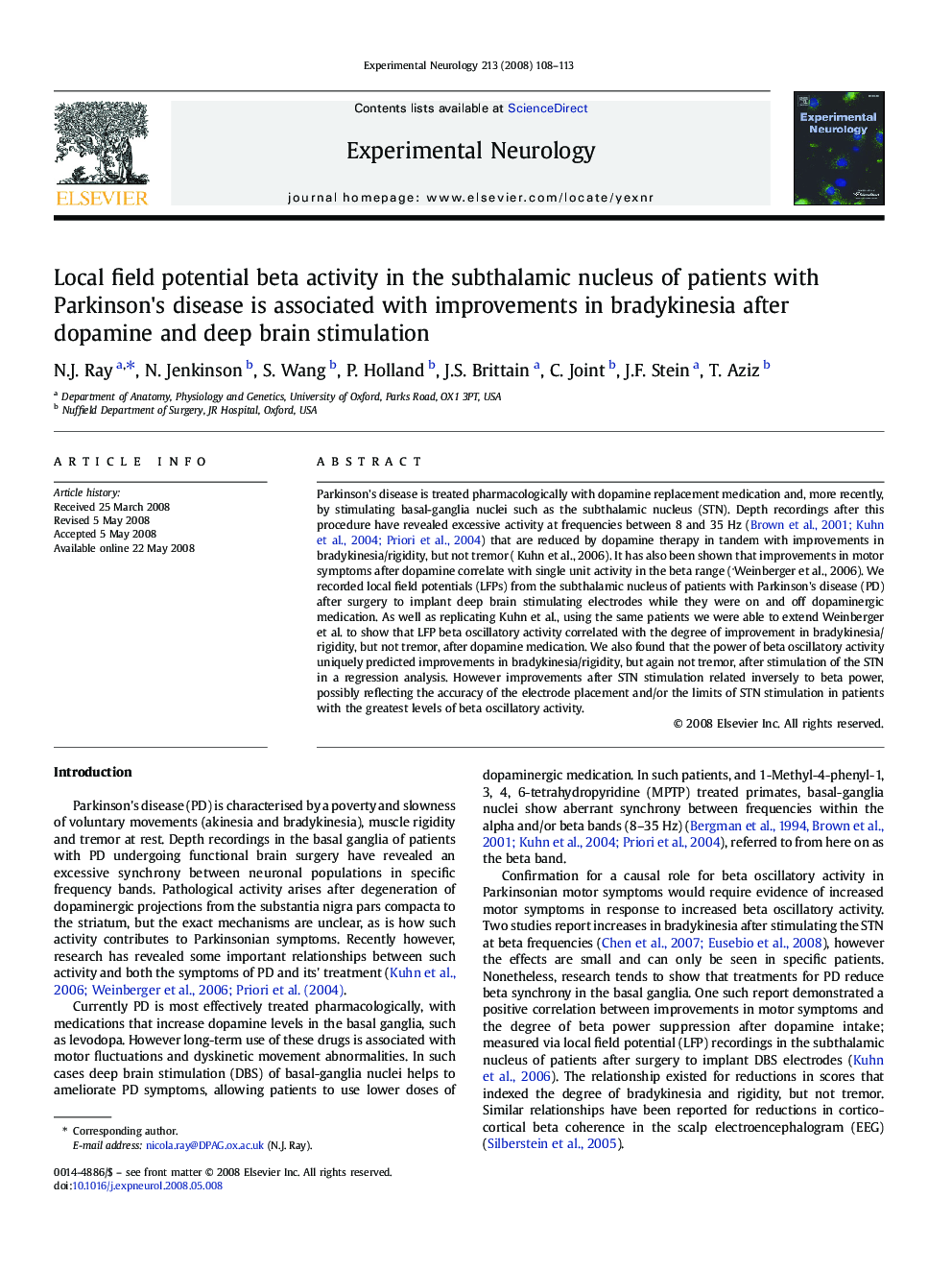| Article ID | Journal | Published Year | Pages | File Type |
|---|---|---|---|---|
| 3056420 | Experimental Neurology | 2008 | 6 Pages |
Parkinson's disease is treated pharmacologically with dopamine replacement medication and, more recently, by stimulating basal-ganglia nuclei such as the subthalamic nucleus (STN). Depth recordings after this procedure have revealed excessive activity at frequencies between 8 and 35 Hz (Brown et al., 2001, Kuhn et al., 2004 and Priori et al., 2004) that are reduced by dopamine therapy in tandem with improvements in bradykinesia/rigidity, but not tremor (Kuhn et al., 2006). It has also been shown that improvements in motor symptoms after dopamine correlate with single unit activity in the beta range (Weinberger et al., 2006). We recorded local field potentials (LFPs) from the subthalamic nucleus of patients with Parkinson's disease (PD) after surgery to implant deep brain stimulating electrodes while they were on and off dopaminergic medication. As well as replicating Kuhn et al., using the same patients we were able to extend Weinberger et al. to show that LFP beta oscillatory activity correlated with the degree of improvement in bradykinesia/rigidity, but not tremor, after dopamine medication. We also found that the power of beta oscillatory activity uniquely predicted improvements in bradykinesia/rigidity, but again not tremor, after stimulation of the STN in a regression analysis. However improvements after STN stimulation related inversely to beta power, possibly reflecting the accuracy of the electrode placement and/or the limits of STN stimulation in patients with the greatest levels of beta oscillatory activity.
